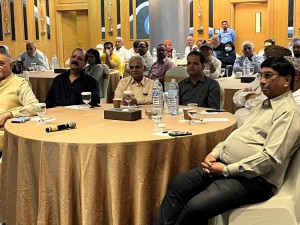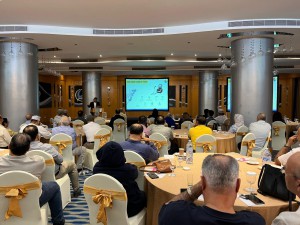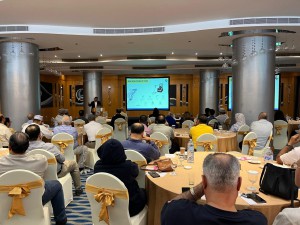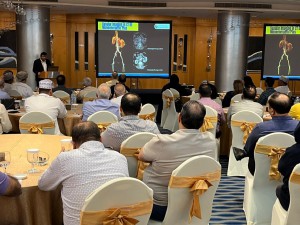Overview
Rabies is a deadly virus spread to people from the saliva of infected animals. In India rabies virus is usually transmitted through a bite especially stray dog, once a person begins showing signs and symptoms of rabies, the disease nearly always causes death. For this reason, anyone who may have a risk of contracting rabies should receive rabies vaccinations for protection. It causes symptoms like seizures, hallucinations and paralysis. Rabies is preventable if you’re vaccinated quickly after exposure. Once symptoms start, rabies is fatal.
There’s no approved treatment for rabies once you have symptoms. If you’ve been exposed to rabies (were bitten by or been in contact with an infected animal), contact a healthcare provider as soon as possible.
Clean the wound gently but thoroughly with soap and water. Ask your provider for additional instructions on cleaning the wound. Your provider will give you a series of shots (vaccinations) to prevent the virus from causing rabies. They’ll also give you an antibody treatment directly to the wound if you’ve never been vaccinated before.
Symptoms
Prodromal symptoms of rabies
- Fever.
- Tiredness (fatigue).
- Bite wound burning, itching, tingling, pain or numbness.
- Cough.
- Sore throat.
- Muscle pain.
- Nausea and vomiting.
- Diarrhea.
Acute neurologic symptoms of rabies
Neurological symptoms of rabies are either furious or paralytic. Furious rabies symptoms may come and go with periods of calm in between (furious episodes).
Furious rabies symptoms
- Agitation and aggression.
- Restlessness.
- Seizures.
- Hallucinations.
- Muscle twitching (fasciculations).
- Fever.
- Racing heart (tachycardia).
- Fast breathing (hyperventilation).
- Excessive salivation.
- Two different-sized pupils (anisocoria).
- Facial paralysis (facial palsy).
- Fear of water/drinking (hydrophobia).
- Fear of air being blown in your face/drafts (aerophobia).
- Delirium.
Paralytic rabies symptoms
- Fever.
- Headache.
- Neck stiffness.
- Weakness, especially starting from the body part that was bitten and progressing to other body parts.
- Tingling, “pins and needles” or other strange sensations.
- Paralysis.
- Coma.
Causes
The rabies virus causes a rabies infection. The virus spreads through the saliva of infected animals. Infected animals can spread the virus by biting another animal or a person.
In rare cases, rabies can be spread when infected saliva gets into an open wound or the mucous membranes, such as the mouth or eyes. This could happen if an infected animal licked an open cut on your skin.
Animals that can transmit the rabies virus
Any mammal (an animal that suckles its young) can spread the rabies virus. The animals most likely to spread the rabies virus to people include:
- Pets and farm animals
-
- Cats
- Cows
- Dogs
- Ferrets
- Goats
- Horses
- Wild animals
-
- Bats
- Beavers
- Coyotes
- Foxes
- Monkeys
- Raccoons
- Skunks
- Woodchucks
In very rare cases, the virus has been spread to tissue and organ transplant recipients from an infected organ.
Diagnosis and Tests
Unlike most illnesses, you shouldn’t wait for symptoms to diagnose rabies. If you’ve been bitten or scratched by a wild animal or a pet that might have rabies, talk to your healthcare provider right away. They’ll examine your wound and ask questions to determine whether you need to be treated for rabies. You may also be tested for signs of rabies.
Your provider may ask you:
- How you got hurt.
- What kind of animal scratched or bit you.
- Whether they can test or observe the animal.
If the animal could have rabies, it’ll be watched for signs or tested, if possible. Animals have to be euthanized (humanely killed) to test them.
What tests will be done to diagnose this condition?
Tests for rabies might include:
- Saliva test. You’ll spit into a tube. It’ll be sent to a lab to look for signs of rabies.
- Skin biopsy. Your provider will take a small sample of skin from the back of your neck. Your skin sample will be sent to a lab to look for signs of rabies.
- Cerebrospinal fluid test (lumbar puncture). Your provider will use a needle to take a cerebrospinal fluid (CSF) from your lower back. Your CSF sample will be sent to a lab to look for signs of rabies.
- Blood tests. Your provider will use a needle to take blood from your arm. Your blood will be sent to a lab to look for signs of rabies.
- MRI. You’ll lie in a machine that takes pictures of your brain. Your provider will use the pictures to help determine what’s causing your symptoms.
Treatment
Once a rabies infection is established, there’s no effective treatment. Though a small number of people have survived rabies, the disease usually causes death. For that reason, if you think you’ve been exposed to rabies, you must get a series of shots to prevent the infection from taking hold.
Treatment for people bitten by animals with rabies
If you’ve been bitten by an animal that is known to have rabies, you’ll receive a series of shots to prevent the rabies virus from infecting you. If the animal that bit you can’t be found, it may be safest to assume that the animal has rabies. But this will depend on several factors, such as the type of animal and the situation in which the bite occurred.
Rabies shots include:
- A fast-acting shot (rabies immune globulin) to prevent the virus from infecting you. This is given if you haven’t had the rabies vaccine. This injection is given near the area where the animal bit you if possible, as soon as possible after the bite.
- A series of rabies vaccinations to help your body learn to identify and fight the rabies virus. Rabies vaccinations are given as injections in your arm. If you haven’t previously had the rabies vaccines, you’ll receive four injections over 14 days. If you have had the rabies vaccine, you’ll have two injections over the first three days.
Determining whether the animal that bit you has rabies
In some cases, it’s possible to determine whether the animal that bit you has rabies before beginning the series of rabies shots. That way, if it’s determined the animal is healthy, you won’t need the shots.
Procedures for determining whether an animal has rabies vary by situation. For instance:
- Pets and farm animals. Cats, dogs and ferrets that bite can be observed for 10 days to see if they show signs and symptoms of rabies. If the animal that bit you remains healthy during the observation period, then it doesn’t have rabies and you won’t need rabies shots.
Other pets and farm animals are considered on a case-by-case basis. Talk to your doctor and local public health officials to determine whether you should receive rabies shots.
- Wild animals that can be caught. Wild animals that can be found and captured, such as a bat that came into your home, can be killed and tested for rabies. Tests on the animal’s brain may reveal the rabies virus. If the animal doesn’t have rabies, you won’t need the shots.
- Animals that can’t be found. If the animal that bit you can’t be found, discuss the situation with your doctor and the local health department. In certain cases, it may be safest to assume that the animal had rabies and proceed with the rabies shots. In other cases, it may be unlikely that the animal that bit you had rabies and it may be determined that rabies shots aren’t necessary.
Conclusion
Bringing awareness is as important as preventing the rabies spread. so if you have pets at home ensure they are vaccinated timely, as said prevention is better than cure. also if you come accross your friends looking for any kind of neurological disease treatment abroad you share us the latest reports via email query@gtsmeditour.com or whatsapp on +919880149003.
we shall assist you best opinion as well treatment abroad with translation & accommodation assistance.
Thank you..!
Happy to Assist..1





















